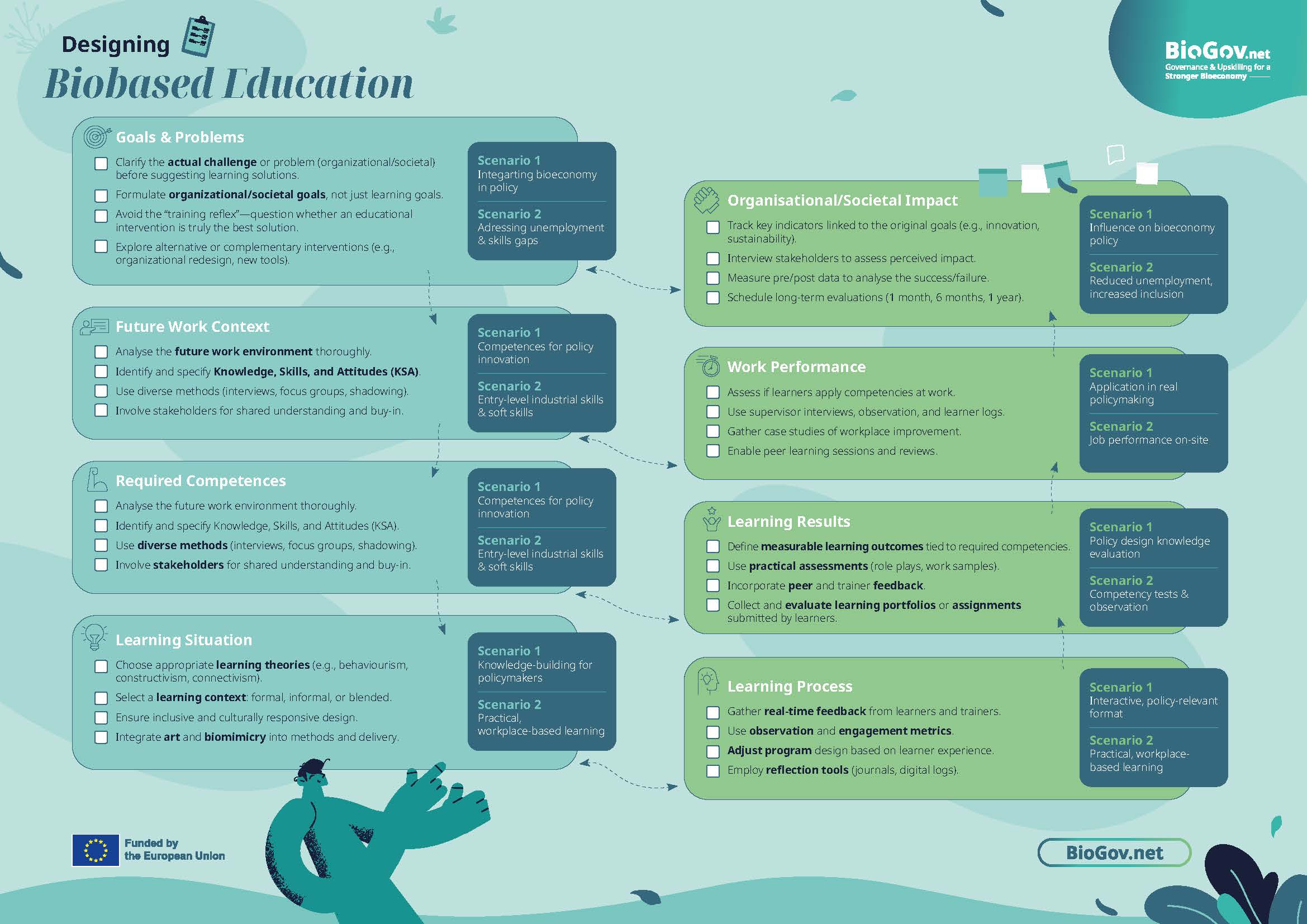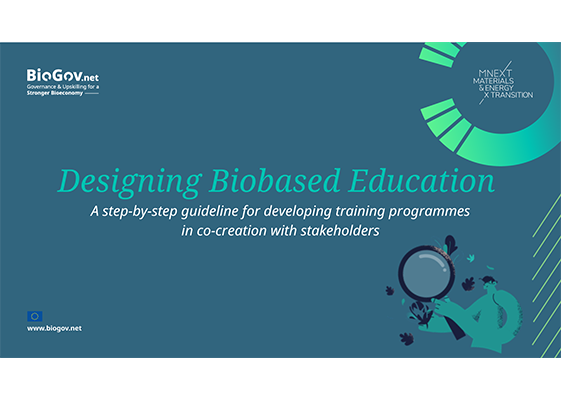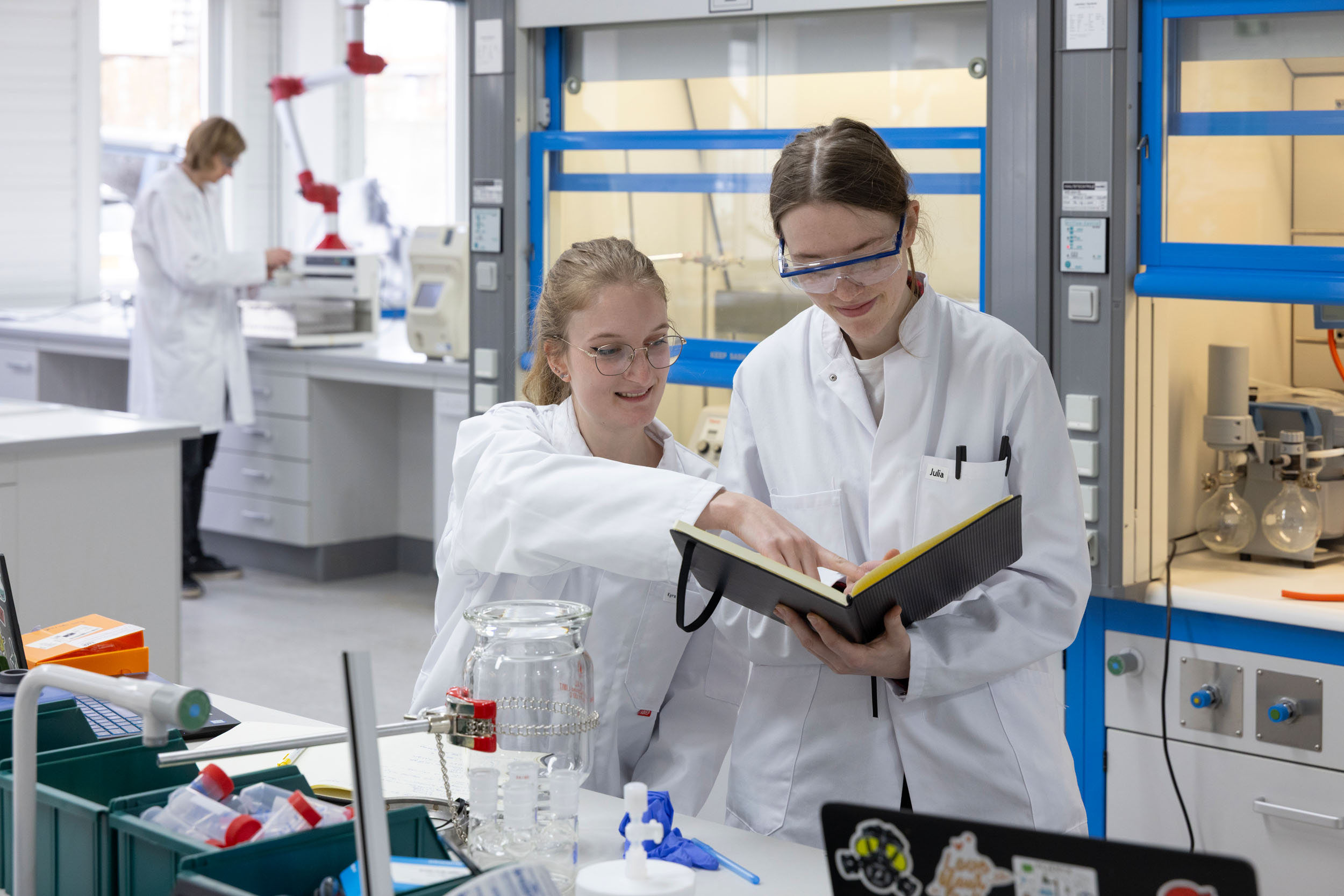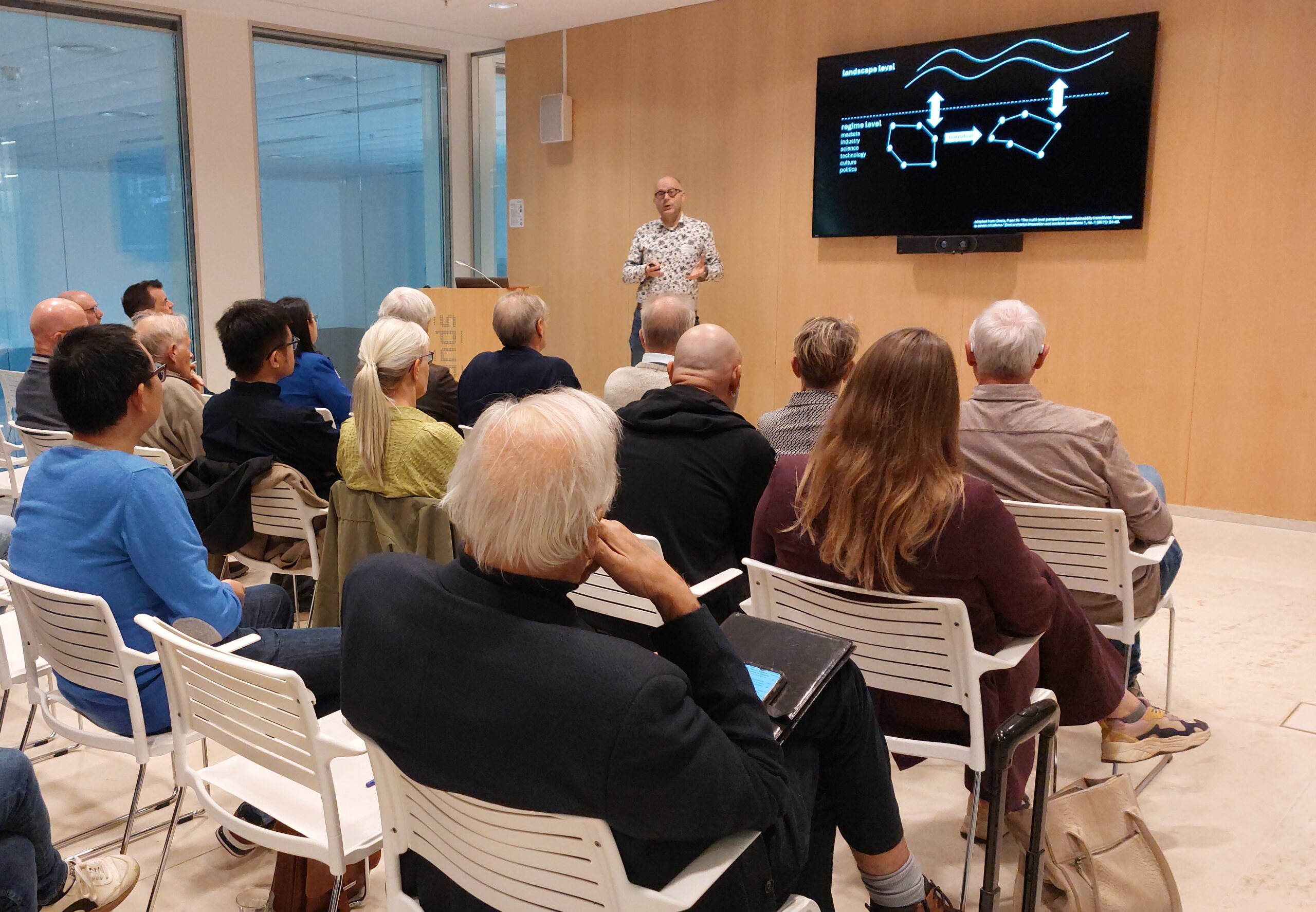From the Netherlands, Centre of Expertise MNEXT and Avans University of Applied Sciences made a key contribution: they developed the practical guideline Designing Biobased Education: A Step-by-Step Guideline for Developing Training Programmes in Co-Creation with Stakeholders. This deliverable is not just a manual, but a process methodology that offers a practical design framework applicable in all regions for developing education on the bioeconomy.
In addition to Avans and MNEXT, the project involved BTG Biomass Technology Group BV (NL), Alma Mater Studiorum – Università di Bologna (IT), Civitta Eesti AS (EE), QPLAN International (GR), LOBA (PT), Pedal Consulting (SK), FVA New Media Research (IT), Agriculture Research Ltd. (CZ), and Wissenschaftsladen Bonn (DE). This broad collaboration made it possible to develop a guideline that is applicable in diverse regional and sectoral contexts. As Mara van Eijndhoven, project leader at Centre of Expertise MNEXT, explains: “We didn’t create a training course, but a process method. It helps you design education in a more targeted and thoughtful way, tailored to the local context and to what works for the learner group. The guideline provides tools for educational designers and organizations to develop effective and impactful biobased education programs. Policymakers will also find recommendations on how to make links with the arts, hard-to-reach groups, and how to organize and facilitate education.”
A method that works in every region
The guideline is built around the Eight Fields Model: a method consisting of eight steps that helps design education based on real needs. From formulating goals to measuring impact, each step challenges designers to make decisions consciously and in context.
“Because each country has different priorities in the bioeconomy, the guideline was developed to be applicable in any context,” says Mara. “With this method, anyone can shape biobased education in their own way.”
Using the biobased economy as a compass
Precisely because the model had to be broadly applicable, extra attention was paid to keeping the connection with the biobased economy clear. MNEXT — as lead author of the guideline — ensured that the theme remained visible and tangible. This was done through language use, example scenarios, and the selection of learning goals aligned with societal transitions.
Even in describing competencies, teaching methods, and evaluation criteria, the biobased economy remains central. This keeps the model flexible in application, but always focused on sustainable change, circular thinking, and social inclusion. “We wanted to avoid the model being seen as just a generic educational tool,” says Mara. “It really needs to contribute to the goals of the biobased economy: sustainability, inclusiveness, and innovation.”
Two scenarios, one approach
To demonstrate how the model works in practice, two scenarios were developed: one for policymakers who want to integrate the biobased economy into their work, and one for guiding job seekers toward roles in the biobased industry. These scenarios show how the model helps to ask the right questions and make well-founded design choices. Instead of starting with content or formats, you begin with the context: what is needed here, for whom, and with what goal?
Space for inclusion and creativity
What distinguishes the guideline from traditional educational design is its focus on inclusion and creative learning formats. Think of storytelling, visual tools, and interactive methods. It also explicitly addresses how to actively involve and support marginalized groups within learning pathways. According to Mara, this is essential: “We paid a lot of attention to how you can use art and creative formats to really engage people, and how you can reach those who don’t usually have easy access to education.”
This approach makes the model suitable for both formal education and informal learning, from retraining and reskilling to internal company training.

Practical tool: the infographic
In addition to the full guideline, an interactive infographic has been developed. This visual summary provides an overview of the eight-step design process, with questions and tools for each phase. Ideal as a checklist or starting point for design teams. “The infographic makes it tangible,” says Mara. “You can get started without having to read through the entire document first.”
An invitation to get started
The guideline has not yet been integrated into existing curricula, but it forms a solid foundation for future-oriented education. It is a practical tool for anyone who wants to use education as a driver of sustainable change — in policy, business, or educational institutions. Its strength does not lie in prescribed content, but in asking the right questions and bringing the right people together. “We hope it helps people look at education differently,” concludes Mara. “Not as an end product, but as a process that starts with the question: what is truly needed here?”
Now that the project is complete, this approach is available to anyone who wants to use it.
Want to get started?
• Explore the guideline guideline Designing Biobased Education (PDF)
• Download the interactive infographic (PDF)
Interested in more information or collaboration? Contact Mara van Eijndhoven.







